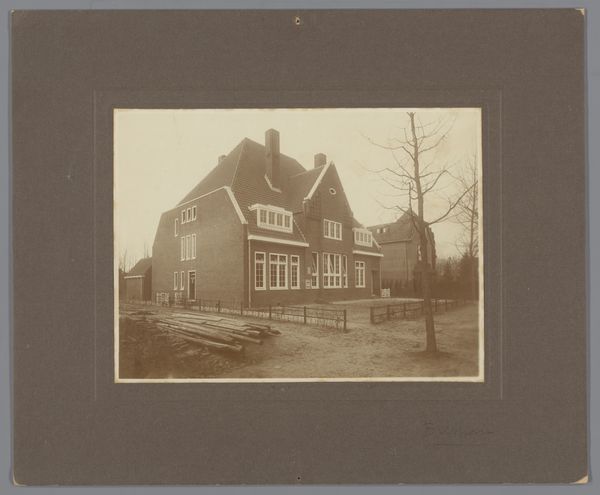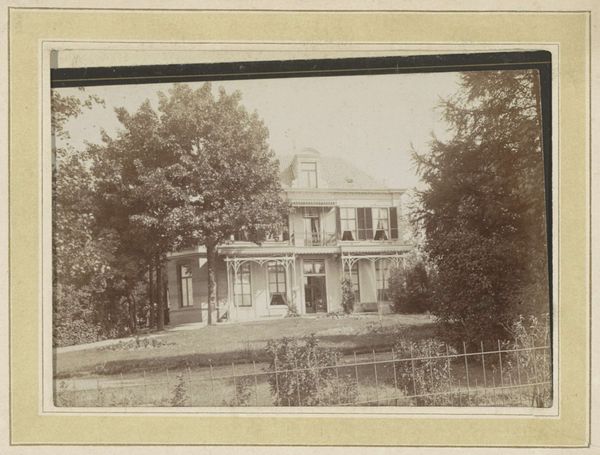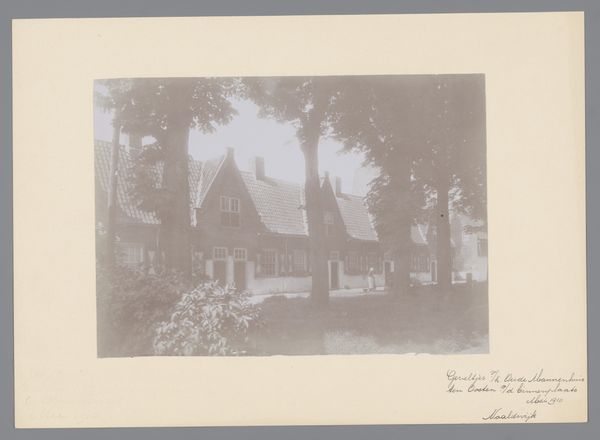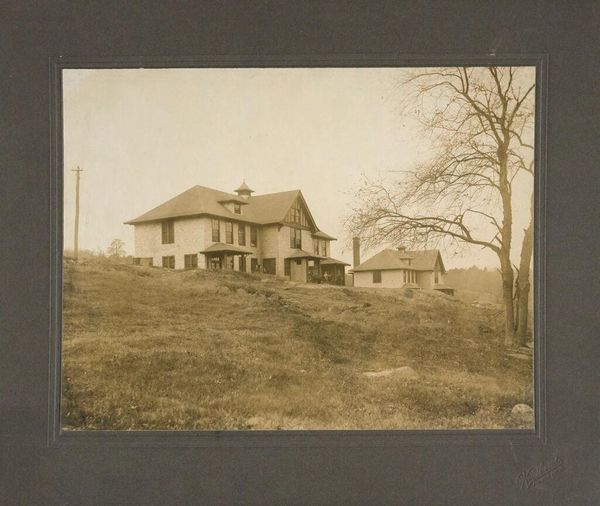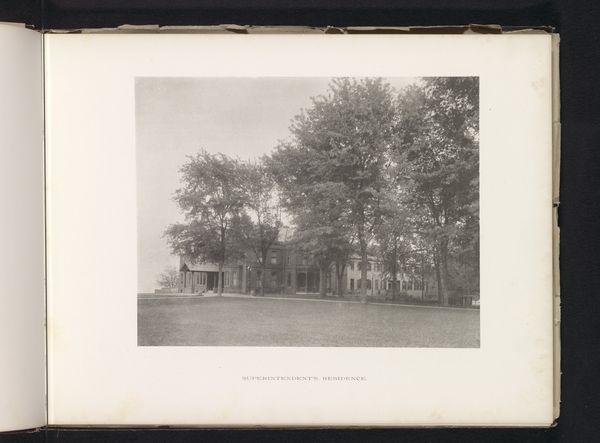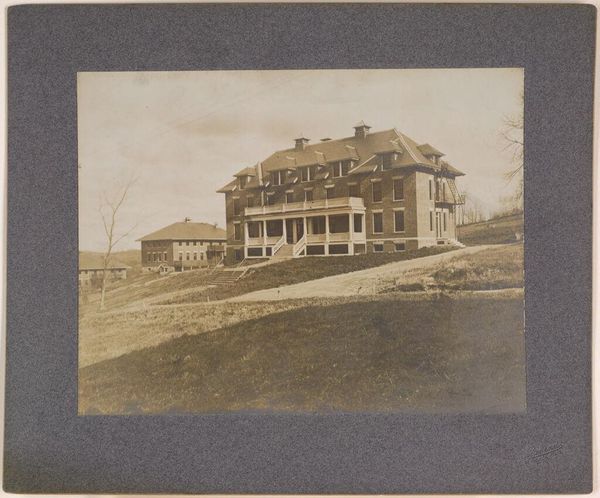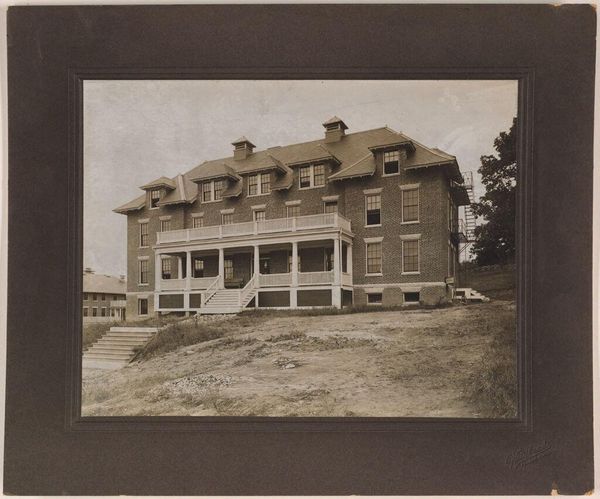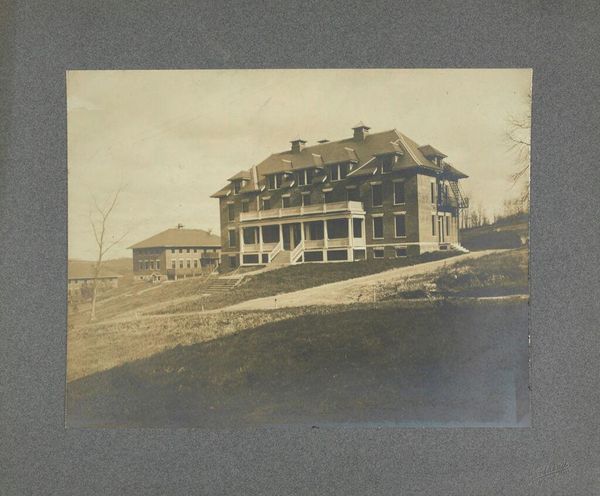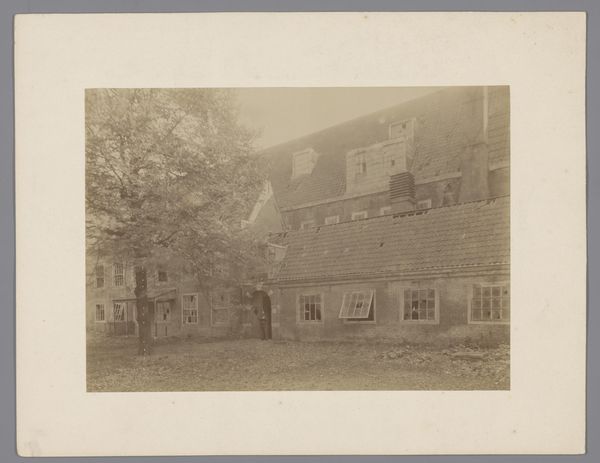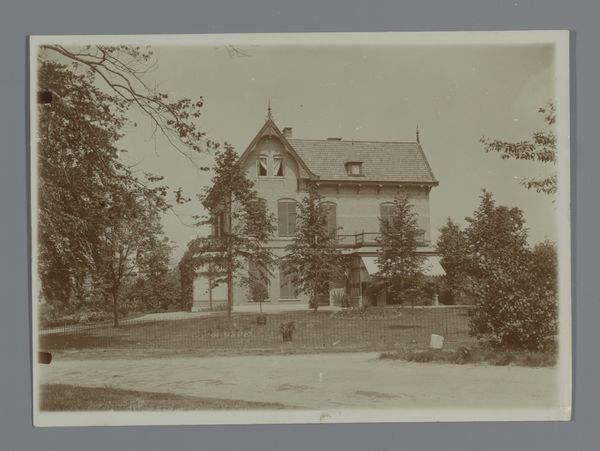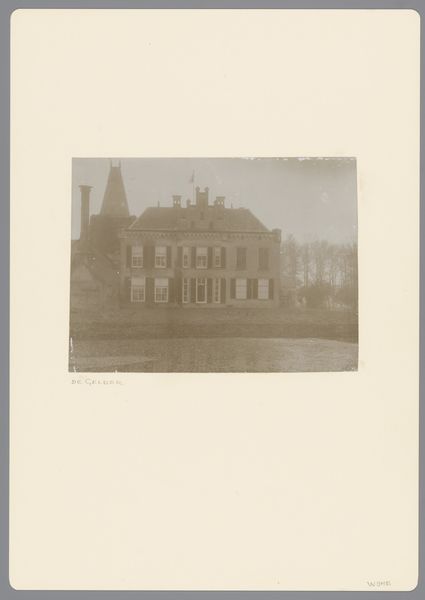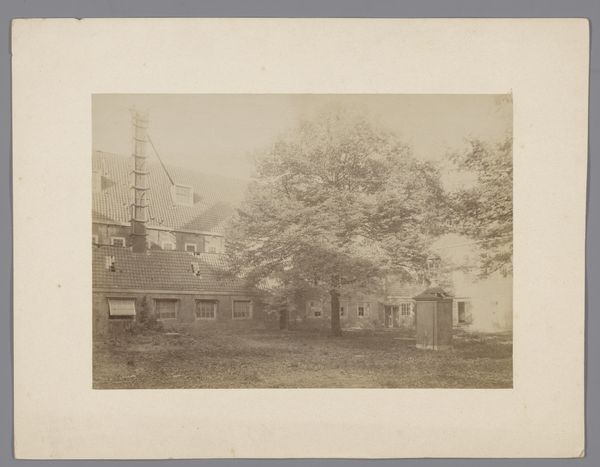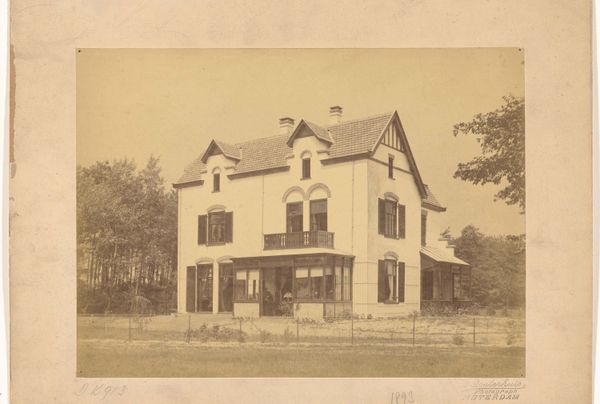
plein-air, photography
#
plein-air
#
photography
#
cityscape
#
realism
Dimensions: height 171 mm, width 230 mm, height 296 mm, width 357 mm
Copyright: Rijks Museum: Open Domain
Curator: Here we have a photograph entitled "Aanzicht op een vrijstaand huis met tuin," or "View of a detached house with garden," attributed to P.J. Bilthoven and believed to have been taken sometime between 1910 and 1930. Editor: It has such a still, almost haunting quality, doesn't it? The monochromatic tones emphasize the strong geometric lines of the building itself. It almost feels posed, formal. Curator: That stillness, I think, reflects the emerging visual culture of suburban identity in that period. The photo operates within an ideal: it represents a home not merely as shelter, but as a status symbol, a site of social performance. We need to understand the image as reflecting the socio-economic aspirations tied to home ownership during that era. Editor: Interesting! The lawn stretches almost empty; there is barely any detail that betrays daily family life, the garden in the title also seems very…contained. Is this emptiness a purposeful articulation of newly discovered possibilities for social and cultural representation in suburbia? How did photography help encode the ideal image of a perfect family? Curator: Precisely. And think about the medium itself. Photography in the early 20th century became increasingly accessible, coinciding with suburban expansion. This allowed the burgeoning middle class to document and circulate images of their homes, effectively reinforcing and broadcasting their position within a specific social strata. The rise of the suburbs allowed people to embrace new lifestyles in terms of personal expression. Editor: So, this seemingly simple image reveals larger stories about social aspirations and evolving class dynamics during a critical time of urbanization. Curator: Precisely. When looking at such photos, we’re not merely viewing architecture, but really accessing an archive of evolving cultural norms around domesticity. It reminds us of the intricate dance between individual identity and wider community identity that is so relevant today. Editor: Thank you, I am more informed now.
Comments
No comments
Be the first to comment and join the conversation on the ultimate creative platform.
